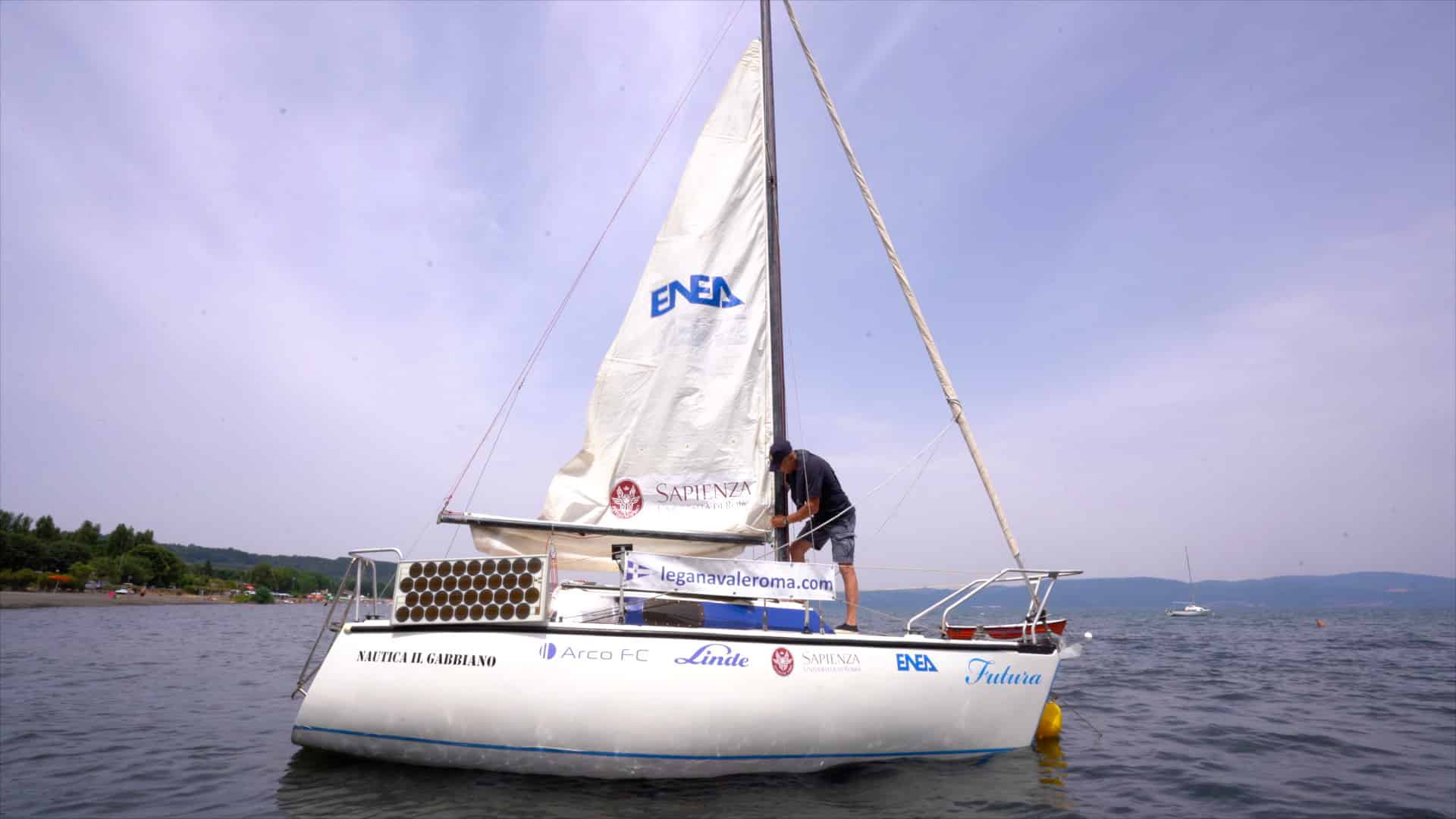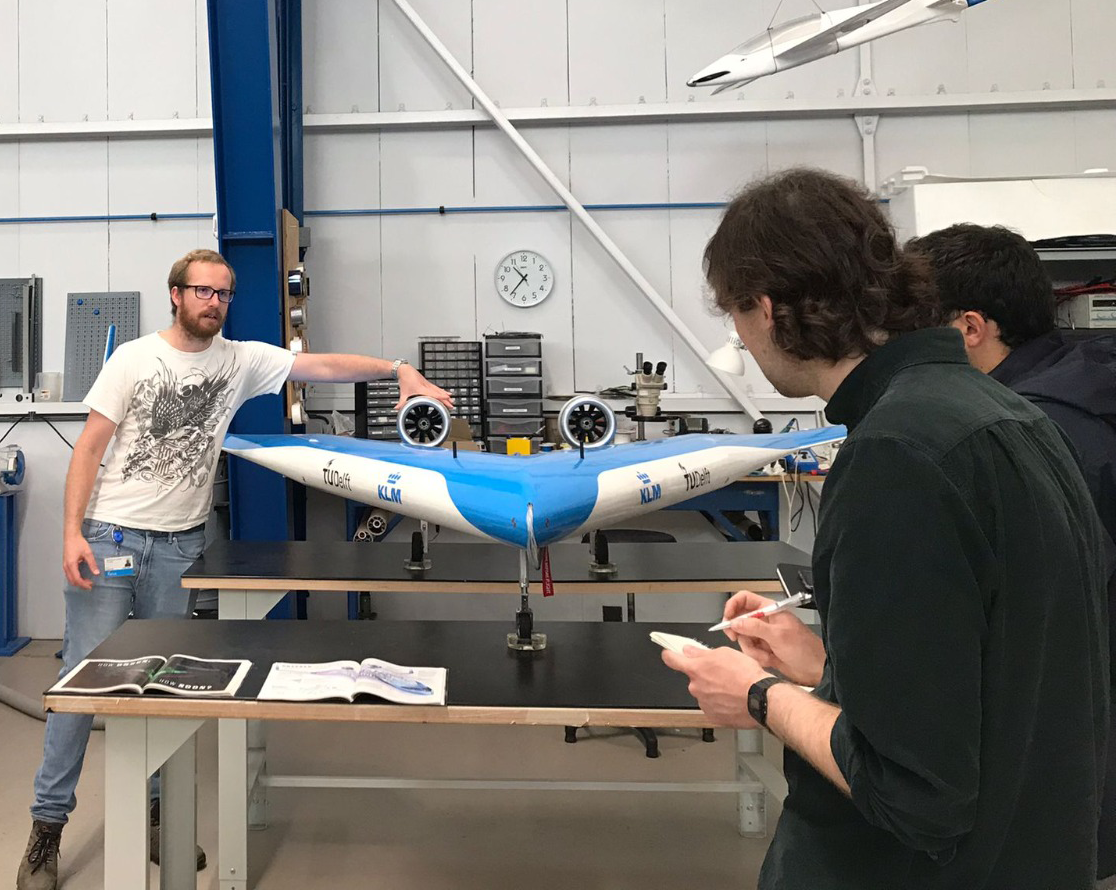
Lake Bracciano is one of the favorite ways for Rome inhabitants to take a break from the city – being only 30 kilometers away. One of the main activities is taking a boat trip in the lake – whose volcanic origin gave it a circular shape – to circumnavigate the 32 kilometers of shoreline. In this same scenario, a cohort of researchers and companies launched a hydrogen-powered vessel.
Futura is the sailing boat developed by a consortium of Italian firms and institutions, including ENEA – the Italian Government Agency for New Technologies, Energy, and Sustainable Economic Development. Lega Navale Italiana – Italian Naval League, LNI – also partnered up, while Arco-Fuel Cell and Linde Gas Italia provided the necessary components.
The vessel managed to sail in Lake Bracciano for up to 5 hours on its electric engine. The 1 kWh fuel cell system transforms the hydrogen – H2 – stored in a small tank into electricity. Futura can have 3 passengers on board – in addition to the skipper – and can reach a 2.5 knots speed, the equivalent of 4 kilometers per hour.
“The project consisted in installing in a regular boat commercially available hydrogen technologies. In this way, we wanted to prove that H2 can be an easy-to-deploy solution,” explains Viviana Cigolotti. She is the head of ENEA’s lab on batteries and technologies for H2 production and use.

Hydrogen shipping requires time
Hydrogen is deemed to reshape mobility in the next decades. The maritime sector makes no exception, as more projects are paving the way to its mass application. There is a wide variety of vessels, from cruise ships to small leisure boats. Regarding this, Futura wanted to be a proof of concept, showing that electric sailing is possible and potentially scalable to other kinds of ships too. Withal, many challenges are on the way.
“First and foremost, it is all about understanding the vessel itself in terms of fuel consumption and power. Furthermore, bigger ships have different needs than sailing boats and have different spaces to place hydrogen tanks. To replicate – or to improve – range of autonomy using H2, it is fundamental to identifying the available space on board for storing hydrogen,” Cigolotti highlights. Therefore, every vessel requires a different hydrogen production and storage system redesign.
Besides what happens when sailing, mainland logistic aspects have to be figured out. Cigolotti: “Harbor infrastructures can’t be shied away from, as they need to have the facilities to recharge and welcome electric ships.” To accommodate the transition, docks and all systems related to them will have to be reshaped. ENEA itself is working on these solutions. In another project, they design hydrogen trucks for moving containers in harbors.

Viviana Cigolotti
Head of ENEA’s laboratory on batteries and technologies for hydrogen production and use
She’s responsible for several national and European initiatives on hydrogen at ENEA.
More hydrogen-related projects
In addition to the technical challenges, the legal framework could assist investments in hydrogen technology for shipping. “As it can’t be still used as a fuel for shipping, how can ship makers think of investing in these innovations?” Cigolotti points out. The International Maritime Organization – IMO – is expected to develop technical provisions for hydrogen and ammonia by 2023.
According to a study by the University of Colorado, a large ship can use up to 250 tons of fuel per day. By large ships, they mean vessels having over 2500 passengers on board. Fincantieri – one of the biggest shipbuilding groups worldwide – is already producing hydrogen cruise ships for MSC – a main cargo and cruise operator. H2 will be used to produce energy for alimenting the hospitality areas of the ship and to supply energy to the vessel when in the harbor – while engines are turned off.
In 2021 several reports from Norway informed that Green Ships was working on a project to build hydrogen-powered ferries in the Mediterranean Sea. Particularly, to make them operate on the routes connecting Corsica to Southern France and Sardinia – served by Corsica Ferries.
Hydrogen autonomous boats
Electric vessels of the future will be able to generate hydrogen on board. One example is represented by DRIFT, a British company that proved to produce hydrogen from a purpose-built hydrofoil sailboat. The trials showed a six-liter green hydrogen production in two hours.
Following a different approach, the Italian H2Boat designed a hybrid system to produce and stock hydrogen onboard. Using solar panels, and hydro or wind generators, H2 can be created and then stocked in metal hydrides. These metal alloys can stash fuel using less space – thus being valuable for ship applications.

Show don’t tell
Futura also aimed at engaging citizens. “Part of our work is also informing – and showing – citizens what we do. This initiative also served to give them a tangible example of the application of hydrogen technology,” Cigolotti adds.
In doing so, the partnership with LNI can help to bring innovation closer to people. That’s what ENEA aims for, amid many more research initiatives aiming at reshaping mobility’s future.

